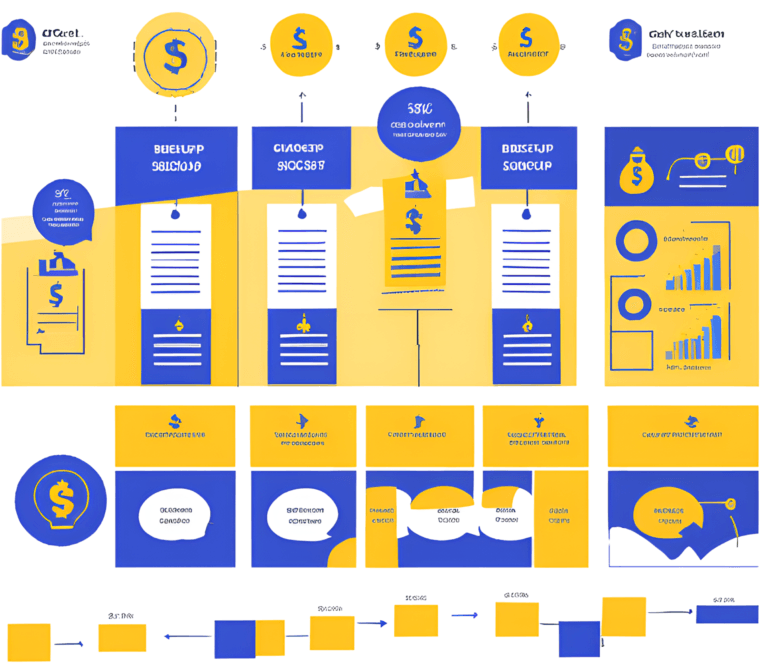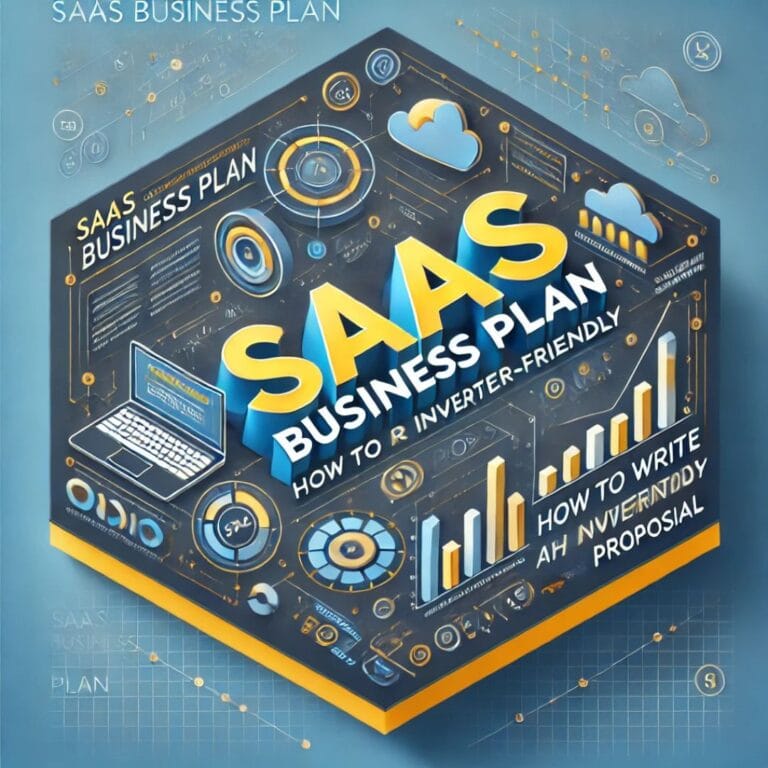VCs play a pivotal role in the success of startups, and evaluating the financial model template is a fundamental aspect of their investment decisions. A well-constructed financial model demonstrating a clear path to profitability and scalability. Significantly enhances a startup’s chances of securing funding. To make informed investment decisions, VCs must thoroughly evaluate various aspects of a startup.
When assessing a business plan and its associated financial forecasting model, it’s crucial to determine the credibility of the figures. While absolute precision is not always required (though accuracy is preferred), each number presented as a fact or assumption should be explained rationally. Investors must have clear insight into the origin of every figure to enable them to scrutinize, verify, and potentially challenge the management’s underlying assumptions.
Why is this level of scrutiny significant? There are instances where entrepreneurs might resort to fabricating figures to bolster their arguments or simply choosing a number that sounds appealing rather than one that accurately fits the context. An investor’s ability to trace the origin and methodology behind every figure is crucial, enabling them to evaluate the legitimacy of these foundational assumptions. It would be a substantial misstep if, post-investment, an investor discovered that a startup’s financial model rested on inaccurate data.
In this article, we’ll dive into how VCs evaluate the financial model for startups and the key metrics they consider.
Understanding the basics of the Venture Capital Financial Model
Before we delve into the specifics, let’s establish a foundational understanding of a venture capital financial model. A startup financial model quantitatively represents a company’s projected financial performance, typically throughout 3 to 5 years. It comprises income statements, balance sheets, and cash flow statements, among other elements.
Key Components of startup valuation model are;
Growth Drivers: VC begins by cultivating a profound understanding of the founder’s business model, industry size, and the key drivers of success and profitability. This knowledge will enable VCs to identify the specific performance metrics they will hone in on when assessing the startup’s potential.
For instance, if you’re running a Software as a Service (SaaS) startup, your priority metrics may include Monthly Recurring Revenue (MRR) and Customer Acquisition Cost (CAC). Conversely, you might emphasize metrics such as Average Transaction Value and Inventory Turnover in the retail sector. In the case of an e-commerce startup, highlighting metrics related to Customer Acquisition Cost, Lifetime Value, and Monthly Average Users would be paramount.
Revenue Projections: VCs closely examine the startup’s revenue projections. Based on market research, these projections should be well-reasoned and show a clear growth path. Sustainable revenue growth is a positive indicator.
Cost Structure: Understanding the startup’s cost structure is critical. VCs evaluate operating expenses, cost of goods sold, and other fixed and variable costs and also analyze the cost impact on the revenue, for instance, how much % of price increased by increasing the 1% of revenue. A well-managed cost structure can significantly impact profitability.
Cash Flow Analysis: VCs look at cash flow statements to assess a startup’s ability to generate and manage cash. It also helps analyze when the startup will need additional capital, and VC also evaluates the favorable time of taking. A positive cash flow is essential for sustainability and growth.
Burn Rate: The rate at which a startup spends its cash is known as the “burn rate.” VCs want to ensure the startup’s burn rate is reasonable and aligns with its revenue projections.
Gross Margin: The gross margin measures the profitability of a startup’s core product or service. VCs prefer startups with healthy gross margins, which indicates the potential for scaling without compromising profitability. VC takes the insights that a startup is a new business; it would lose in the initial periods, but when a startup scales and increases its market share, how would the margin be and will be sustainable?
Customer Acquisition Cost (CAC) and Customer Lifetime Value (CLV): VCs pay attention to CAC and CLV ratios. A low CAC relative to CLV suggests an efficient customer acquisition strategy vital for sustainable growth.
Churn Rate: A high churn rate can harm a startup’s growth. VCs look for low churn rates, indicating a solid product-market fit and customer retention.
Unit Economics: Understanding the economics of selling a single unit or acquiring a single customer is crucial. VC analyzes the core factor before selecting the startup for investment. Positive unit economics indicate that the startup can scale profitably.
Sensitivity Analysis: VCs appreciate a financial model that includes sensitivity analysis. It shows the startup’s resilience to changes in critical variables and demonstrates preparedness for different scenarios.
Startups should focus on creating a robust product or service and presenting a compelling startup financial model template that instills confidence in potential investors.
Types of Financial Models That Venture Capitalists (VCs) Avoid
VCs go through numbers of financial models in a month but it can vary widely based on their investment strategy, the size of their team, and their focus on specific industries or stages of startups. Some VCs may review dozens of financial models in a month, while others may evaluate a more minor number but in greater detail. Typically, VCs receive numerous pitch decks and business plans from startups but may only delve into financial models for those that pass the initial screening.
Here are a few reasons why startups should focus to make their excel based financial models dynamic and simple for VCs to understand:
Time Efficiency: VCs have limited time to evaluate potential investments. Simplifying your financial model makes it easier for them to quickly grasp the key points, which can increase the likelihood of your startup moving to the next stage of consideration.
Clarity: A well-structured, straightforward financial model template is more likely to be understood, reducing the risk of misinterpretation or confusion. VCs appreciate transparency in financial projections and assumptions.
Transparency: Simple and dynamic financial models demonstrate transparency. VCs want to see that your assumptions are realistic and that your model is based on sound data and reasoning.
Scenario Analysis: A dynamic model allows for easy scenario analysis. VCs can adjust key variables or assumptions to understand how changes may impact the startup’s financial performance. It helps them assess the startup’s resilience and adaptability.
Communication: An understandable model fosters better communication between the startup and the VC. It ensures that both parties agree regarding the startup’s financial outlook and growth plans.
Risk Mitigation: Keeping the model simple and dynamic reduces the chances of errors or overly complex assumptions that could introduce unnecessary risk. It instills confidence in VCs that you have a firm grasp on your financials.
Ease of Iteration: Startups often need to iterate their financial models as they learn more about their business and market. A dynamic model can be more easily adapted to incorporate new information and changes in strategy.
Accessibility: VCs may share your financial model with their team or experts for additional input and evaluation. A straightforward model is more accessible and understandable to a broader audience.
Entrepreneurs or founders should consider the following tips to make your financial model dynamic and simple for VCs:
Focus on the key drivers of your business and the primary revenue and cost components.
Use clear and concise labels and colors for each line item and variable in the model.
All Assumptions should be in one sheet
Provide explanations or assumptions for critical variables.
Use formulas to keep the model flexible easily adjustable, and avoid complex hardcoding values.
Include a summary or dashboard that highlights the most essential metrics and assumptions.
Ensure that the model is error-free and well-organized.
By presenting a dynamic and straightforward financial model, startups can improve their chances of gaining VC interest and investment, as it reflects a commitment to clear communication, realistic financial planning, and adaptability in the face of changing market conditions.
Startup valuation technique used by venture capitalists or investors
Venture capitalists and investors use several valuation techniques to assess the worth of a startup. The choice of method can depend on various factors, including the stage of the startup, the industry, and the specific circumstances. Some standard startup valuation techniques include:
Market Comparable Analysis: This approach involves comparing the startup to similar companies in the same industry that have recently been funded or acquired. Valuation metrics, such as price-to-earnings (P/E) ratios, revenue multiples, or user metrics, are used to estimate the startup’s value.
Discounted Cash Flow (DCF) Analysis: DCF analysis estimates the present value of a startup’s future cash flows. Investors forecast future revenues, expenses, and cash flows and then discount them to their current value using a chosen discount rate. DCF is often used for startups with proven revenue streams.
Berkus Method: Named after venture capitalist Dave Berkus, this method assigns a specific value to key milestones or elements of the startup, such as a working prototype, strong management team, or strategic partnerships. These elements are given a predetermined monetary value, and the sum of these values provides an initial valuation.
Risk-Adjusted Return Method: This method adjusts the expected return on investment based on the perceived level of risk associated with the startup. Risk factors include market risk, technology risk, competition, and management team. The valuation is then adjusted based on these risks.
Venture Capital Method (VC Method): The VC Method involves estimating the startup’s potential future exit value (often through acquisition) and working backward to determine the required return on investment for the investor. This method considers the expected exit date, expected exit value, and the desired return multiple.
Scorecard Valuation Method: This approach evaluates a startup based on predetermined criteria and assigns a score to each factor. The total score is then compared to other startups in the same sector to estimate valuation.
Book Value or Asset-Based Valuation: This method assesses the value of a startup’s assets, such as intellectual property, equipment, or real estate. While it’s less commonly used for tech startups, it can be relevant for businesses with substantial tangible assets.
Comparative Analysis: This technique involves comparing the startup to established companies similar in industry, size, and growth potential. The startup’s valuation is derived by considering how it compares in various aspects, including market share, revenue, and market opportunity.
Stage-Based Valuation: Early-stage startups may be valued based on their development stage. Investors assess how far along the startup is in its product development, user acquisition, or revenue generation, and the valuation reflects the corresponding risk and potential.
Option Pricing Models: These models are often used for startups that have issued employee stock options or convertible securities. They account for the potential dilution of ownership as options are exercised, or securities are converted.
It’s important to note that startup valuation is not an exact science, and different investors may use different methods or a combination of techniques. Ultimately, valuation is a negotiation between investors and founders, and other factors, such as market conditions, competition, and the startup’s growth potential, also play a significant role in determining the final valuation.
Read More: How to Do Startup Valuation Using 8 Different Methods
What to do if Founders are not finance Savvy:
If the founders of a startup are not finance-savvy or specialists and lack the expertise to create a custom financial model and startup business plan template, they still have several options to ensure that these crucial documents are well-prepared:
Hire a Financial Modeling Expert or Outsource to a Startup Advisory Services: One of the most common solutions is to bring in a financial modeling expert or startup agency who provides financial model services, bookkeeping services, and other related services. It could be a CFO, a financial analyst, or a consultant with experience in creating financial models and business plans. They can help the founders understand the financial aspects of the business and guide them through the process. While this incurs a cost, it ensures the documents are professionally prepared.
Enroll in Training or Workshops: Founders can consider taking finance or business courses or workshops focusing on creating financial models and business plans. Many universities and online platforms offer courses tailored to entrepreneurs. Gaining this knowledge can empower them to take the lead.
Use Financial Software and Templates: Numerous financial modeling and business plan software tools are available that simplify the process. Founders can use these tools, which often come with templates and step-by-step guidance, to create their financial models and business plans.
Seek Mentorship: Finding a mentor with expertise in finance or entrepreneurship can be immensely valuable. Mentors can provide guidance, share their knowledge, and help founders refine their financial models and business plans.
Collaborate with a Co-Founder or Team Member: If a co-founder or team member has financial expertise, they can lead in creating the financial model and business plan. This collaboration allows founders to leverage team members’ strengths with complementary skills.
Consult with Accelerators and Incubators: Many startup accelerators and incubators provide resources and support to help founders develop their financial models and business plans. These programs often include workshops, mentorship, and guidance on creating investment-ready documents.
Learning by Doing: Although challenging, learning through experience is an option. Founders can start with basic financial models and plans, seek feedback from mentors and investors, and gradually improve their skills.
Pitch Competitions and Networking: Participating in pitch competitions or networking events can provide founders with valuable feedback on their business plans and financial models. It’s an opportunity to learn from experienced entrepreneurs and investors.
Stay Open to Feedback: Regardless of the approach taken, founders should remain open to feedback and continuously seek ways to improve their financial models and business plans. Learning and refinement are ongoing processes.
Bottom Line
Evaluating a startup’s financial model and the subsequent valuation by venture capitalists and investors are intricate processes. Understanding the critical components and key performance indicators and presenting them simply, transparently, and dynamically is essential for startups seeking investment. While the number of financial models reviewed by VCs may vary, founders must stand out by offering a model that is easy to comprehend and backed by realistic assumptions.
For founders who lack financial expertise, various avenues exist to address this challenge, such as seeking external financial guidance, using specialized software tools, or collaborating with knowledgeable team members. The key is to ensure that your financial model and business plan reflect your startup’s true potential and value, ultimately enhancing your prospects for securing the necessary funding to fuel your entrepreneurial journey. Remember, transparency, adaptability, and a commitment to continuous learning can be the keys to attracting investor interest and propelling your startup toward success.






